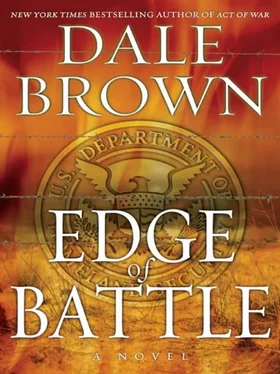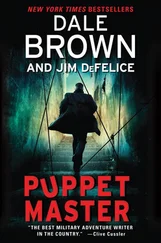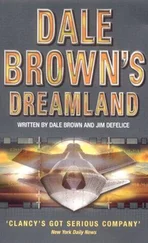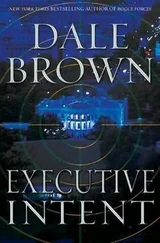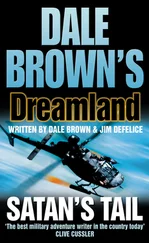It was a numbers game most migrants were willing to play. The strongest and most dedicated of them would make it. The women, children, and the weaker ones had their own role to play too: they gave the Border Patrol someone to catch.
Once the migrants got to Ocatillo, there was a fairly sophisticated travel network set up to get the majority of them to their destinations. Many had relatives waiting for them; many used gypsy taxis and buses, many of them run by farm owners and driven by illegals themselves, to transport pollos to their jobs or to more migrant-friendly bus stations, ones not patrolled as frequently by Border Patrol or Immigration and Customs Enforcement agents. Once north of Interstate 8, the chances of evading the authorities and blending into the largely Hispanic population of southern California was much easier.
The trek for this group of twenty-five men and women went smoothly. They camped a couple miles from the border in a small gully until dark, out of sight of infrequent American patrols; then they crossed the chain-link fence, followed a circuitous path around known motion sensors, and hurried on, being careful to stay off established paths and roads where patrols and sensors would likely be.
By midnight the group was within sight of the town of Ocatillo. Another couple of hours to reach the outskirts of town, and then they would disperse. The group was excited, talking in soft but energetic voices. About a full day on foot, and they were safely in the U.S., ready to get to work. So far, no sign of any patrols or…
At that moment, they heard, “La atención, ésta es la frontera de Estado Unidos patrulla. Permanezca donde usted está y tenga por favor su identificación lista demostrar a los oficiales. Gracias . ”
“ A la chingada! The Border Patrol is here!” one of the migrants cursed.
“Where? Where are they?” another asked. The Border Patrol rarely sneaked up on migrants in the field—they came in with lights on vehicles or helicopters blazing; their checkpoints were surrounded by lights that could be seen for miles, as if very demonstrably broadcasting a warning for the illegals to turn around and head back to the border.
“ ¿Quién cuida? Just run!” At that, eight men took off, five running east and the other three heading west. The rest of the group seemed confused and scared; a few “assumed the position”—squatting down, arms on their knees, and lighting up a cigarette, awaiting arrest—and several others headed off in random, mostly southerly directions, bumping into each other as they fled. A few dared not use flashlights, but most pulled out their “lucis,” short for luciérnaga, or “fireflies”—small disposable flashlights to help them see in the pitch-black darkness, part of the discarded artifacts of the pollos’ presence, along with water bottles and plastic ponchos, which could be seen littering the desert by the thousands along the border region from California to Texas.
“No funcione por favor o usted puede ser dañado,” the electronic voice said. Naturally, none of the ones running stopped. The only lights visible were the lights of Ocatillo far off on the horizon, and that direction had to be avoided. The runners simply put the lights of Ocatillo on their backs or left or right shoulders and ran as best they could, hoping that the Border Patrol would pick someone else to arrest.
The group of eight men running east shielded their “lucis” as much as possible to avoid giving away their position, but they still had trouble maintaining their balance as they half-ran, half-stumbled through the darkness. But the chase—the scratches from running into thorny bushes, the twisted ankles, the headlong tumbles down an unseen wash—was part of the game, and they played it well. The Border Patrol had their all-terrain vehicles, helicopters, dogs, and sensors—all the migrants had were their feet and their desire to make it safely to their destination. Most often they came out on top, proof enough to them that their exertion was worthwhile and justified. The farther they ran, the better chances they had of…
Suddenly they heard an electronic voice shout, “ ¡Parada! ‘Stop!’” directly in front of them, but they could see nothing in the darkness. Two men dodged left away from what they thought was the source of the voice…and ran headlong right into what felt like a steel wall. “¡Madre del díos!” one of them shouted. Dazedly he looked up, then flicked on his luci…
…just in time to see a large figure—not a man, but a man-shaped figure as big as a church doorway. The thing was about ten feet tall, with a ribbed frame throughout with a light gray covering underneath. Its arms were attached to broad shoulders, thinning down to a slender waist, but its legs and feet were wide and very steady-looking. Its head was bullet-shaped, with a variety of sensors attached all around it. But the most unusual thing about the robot is how it moved. It was remarkably agile and incredibly humanlike in all its movements, with every human nuance duplicated with amazing precision. As they watched, the thing darted away and was gone in the blink of an eye into the darkness.
One of the pollos tried to get up and run, but he stumbled into a thorny bush in the darkness, and the energy simply drained out of his body. The second man started scrambling across the desert on his hands and knees, but finally gave up as well and rejoined his dazed amigo.
Through his imaging infrared sensor, Captain Frank “Falcon” Falcone aboard CID One could see the desert landscape even clearer than in the shimmering, eye-burning daytime—and the migrants stood out even clearer, even at ranges in excess of two miles. “Two down here,” he radioed. “I’m going after the group of five.”
“We have a good eyeball on you, Falcon,” Ariadna Vega said. She was back at the first Rampart forward operating location constructed as part of the presidential directive to fortify the U.S.-Mexico border, located about eight miles southeast. She was watching images broadcast from an unmanned reconnaissance vehicle called a Condor, orbiting overhead in a racetrack pattern in this often-used migrant border-crossing area. “The last guy in your group looks like he’s giving up.” She could clearly see the third runner with his hands on his head, walking in the direction from where he came. “The group of five have split up into two groups, Charlie and Delta. Delta looks like the group of three.”
“Got ’em,” Falcone said. Every time he moved his head, his electronic visor showed small lettered arrows where the Condor’s targeting sensors had locked onto a person. “On the way.” Falcone turned in the direction of the Delta arrow and started off in a fast trot, quickly reaching thirty miles an hour and catching up to the runners with ease. He ran past them, then stopped about fifty yards in front of their path and watched as they ran toward him. When they got closer he broadcast, “ Los hombres, éste son la frontera patrullan Operation Rampart. Por favor parada. No le dañaré. ‘ Please stop. I won’t hurt you.’”
“¡Déjenos solos, híbrido!” one of them shouted. Falcone reached out just as one was about to run past him and gave him a push, sending him flying and crashing into the hard-baked earth. Another really big pollo, shining his flashlight on the CID unit before him, gasped aloud, swore, ran toward Falcone, jumped, and kicked out with both feet as if he was trying to break down a door. Falcone wasn’t prepared for the jump-kick and didn’t brace himself; he staggered backward a few steps when the big Mexican hit.
“¿No tan resistente, eh, cerdo?” the third man shouted gleefully. “You messed with the wrong toro tonight, culo! ” Out of nowhere he produced an Intratec TEC-9 nine-millimeter semiautomatic pistol, leveled it, and opened fire, pulling the trigger as fast as he could. The second migrant screamed, trying to tell the third not to shoot, then covering his ears and flattening himself on the ground as the machine gun erupted.
Читать дальше
